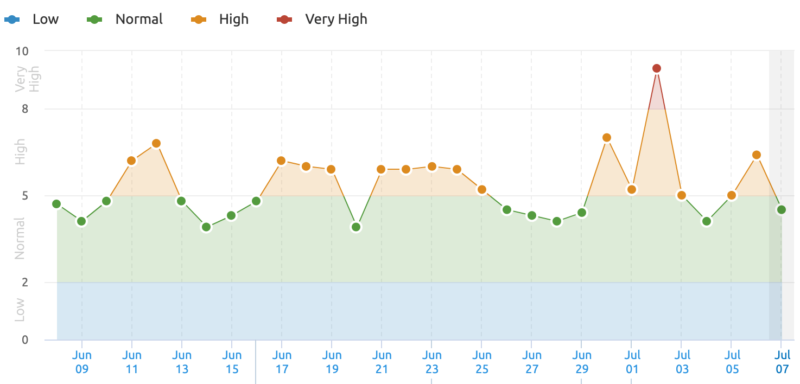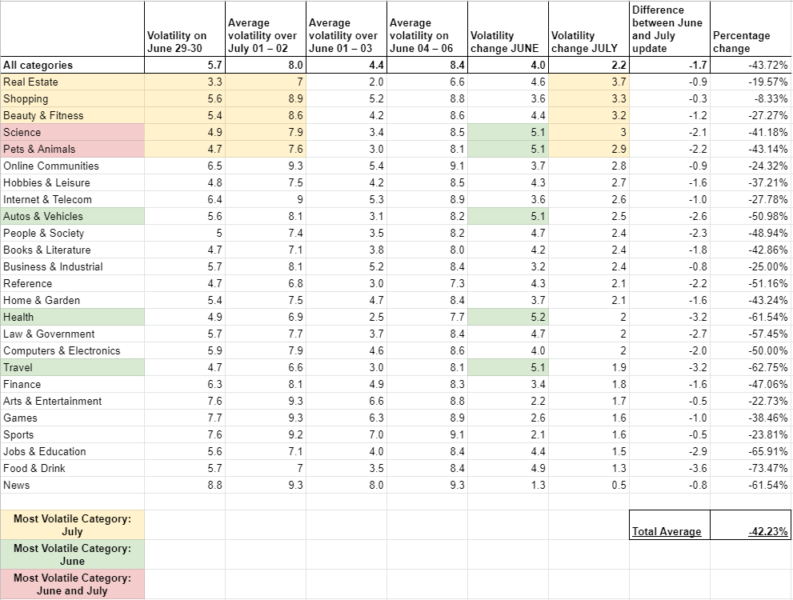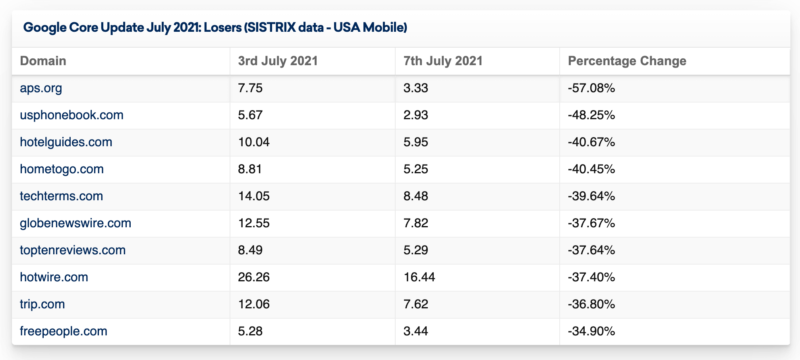Google’s July 2021 core update rolled out quickly; here is what the data providers saw
While the June core update took a while to start rolling out, the July core update hit hard and fast.
The July 2021 core update began going out on July 1, roughly one month after the June 2021 core update. While the core upgrade in June 2021 took longer to roll out and be felt. The core update in July 2021 was felt almost immediately and in a huge way. It’s difficult to say whether the June or July core updates were more significant. Because each of these updates might have a significant influence on a site’s Google organic traffic.
We asked several data organizations that follow Google’s search results for their thoughts on the new upgrade. While everyone agrees that this update was felt fairly immediately. The majority of data sources believe the June update was larger than the July core update.
The facts.
On July 1, 2021, Google began pushing out the July 2021 core update at noon. As far as we know, this update has not yet been completed and is currently being rolled out. As previously announced, the June 2021 core update began rolling out around 6:30 p.m. ET on Wednesday, June 2nd. This, like other core updates, was a global update that affected all regions, languages, and website categories. It’s a standard Google “wide core upgrade” that comes out every few months or so. The previous core update. Which took place on December 3rd, was just shy of a six-month wait period. Before the back-to-back June and July core update combo.
The core update for July 2021 is expected to be completed in less than a week, possibly by the end of this week.
Lots of ongoing updates.
We’ve had roughly 10 Google updates in the last month, with only three of them being unconfirmed by Google. The July 2021 core update, Google MUM, the June 28 spam update, the June 23rd spam update, the Google page experience update, the Google predator algorithm update, the June 2021 core update, and a few unverified updates were all released this month in that sequence.
Previous core updates.
The most recent previous core update was in June 2021, and it was a huge one that took a long time to spread out. Then there was the December 2020 core update, which was very large. Even larger than the May 2020 core update. Which was similarly large and broad and took a few weeks to properly roll out. Prior to that, there was the January 2020 core update, which we discussed here. The core update from September 2019 was the one before that. Many SEOs and webmasters thought the upgrade was weaker than prior core updates because it didn’t have as much of an impact. In November, Google released another upgrade, this time focused on local rankings. More information regarding previous Google upgrades can be found here.
Data providers on the July 2021 core update:
Semrush.
Data from Semrush comparing the July core upgrade to the June core update was supplied to us. “The July 2021 Core Update was exceptional in that it did not demonstrate protracted periods of strong rank fluctuations,” Semrush stated, referring to the June 2021 Core Update. Unlike the June upgrade. However, “the July update did not appear to demonstrate a lag between Google’s announcement and the impact on rankings,” according to the business.
The day after the upgrade was announced, the Semrush sensor tool indicated a 9.4 percent increase:

The June 2021 core upgrade, according to Semrush, showed substantially higher increases in rank volatility. The increases in rank volatility were, on average, 42 percent greater than what the business had been tracking since the July upgrade began.
Comparing the two upgrades, here is the Semrush volatility by category:

Was there any overlap between the sites that were impacted by the June core upgrade and those that were impacted by the July core update? “Only 15 of the 200 domains that made up the most impacted sites (i.e., 100 winners and 100 losers) during the July update coincided with the most impacted domains during the June update,” according to Semrush. However, ten of the 15 domains experienced ranking reversals (i.e., if a domain saw major ranking losses in June, it experienced considerable rises in July and vice versa).”
RankRanger
The July core update, like the June core update, “was a considerable update in compared to the December 2020 release,” according to RankRanger. I contacted the company to compare the June core update to the July core update, and they confirmed that the June update was indeed larger. By comparing the charts in the June report. It appears that the June core update was larger than the July core update.
Here’s a graph that compares the July and December core updates:
Compare that to the June report from RankRanger:
Because of an increase in variations in the top five results. RankRanger considered this update to be more significant than the December 2020 update. Take a look at this graph, which demonstrates how the top five results have shifted far more than the rest:
Compare that to the June 2021 core update data:
Here is a look at this by niche or vertical:
The RankRanger index tracker graphic below shows how this update impacted hard on a single day, as opposed to the June core upgrade, which was spaced out across a few days:

“As we’ve seen in the visibility data from other countries we’ve reviewed.” Sistrix’s Steve Paine told us, “many lists and reference sites have been attacked.” This upgrade, for example, affected entertainment sites that include lyrics and song information, as well as some vacation sites.“Significant SERP changes have been identified since July 3rd, and the Core Update distribution appears to be complete now,” they stated. This is in contrast to the data from Semrush and RankRanger, which detected the change on July 2nd.
Here are the top winners from Sistrix:

Here are the top losers from Sistrix:

The SEO community.
The community discourse and feedback on the July 2021 core update was different from the June 2021 core update in that it transpired within 12-24 hours. As previously stated, it hit hard and fast. On the Search Engine Roundtable, I was able to cover the community reaction in one blog post.
Glenn Gabe’s Twitter stream of particular sites impacted by this change and his opinion on it is also worth checking out; make sure to click through and scroll through the thread; here’s a sample:
What to do if you are hit.
In the past, Google has offered suggestions on what to do if you’ve been harmed by a core upgrade. There are no precise steps to follow to get back on track, and a drop in rankings may not indicate anything is wrong with your sites. If your site is affected by a core change, Google has provided a list of questions to consider. According to Google, there is some recovery time between core upgrades, but the major shift comes after another core update.
Why we care.
It can be difficult to pinpoint exactly what you need to do to reverse whatever algorithmic damage your site has suffered. It’s even more difficult when it comes to Google core updates. These fundamental improvements are big, vast, and cover a lot of general quality issues, based on the data and previous experience and suggestions. This is supported by the evidence shown above. If your site has been affected by a core upgrade. It is frequently recommended that you take a step back and look at your entire website to see what you can do to enhance it.
We hope this update was beneficial to you, your organization, and your clients.
The post Google’s July 2021 core update rolled out quickly; here is what the data providers saw appeared first on Soft Trending.
from Soft Trending https://ift.tt/3qVWokF
via softtrending
Comments
Post a Comment